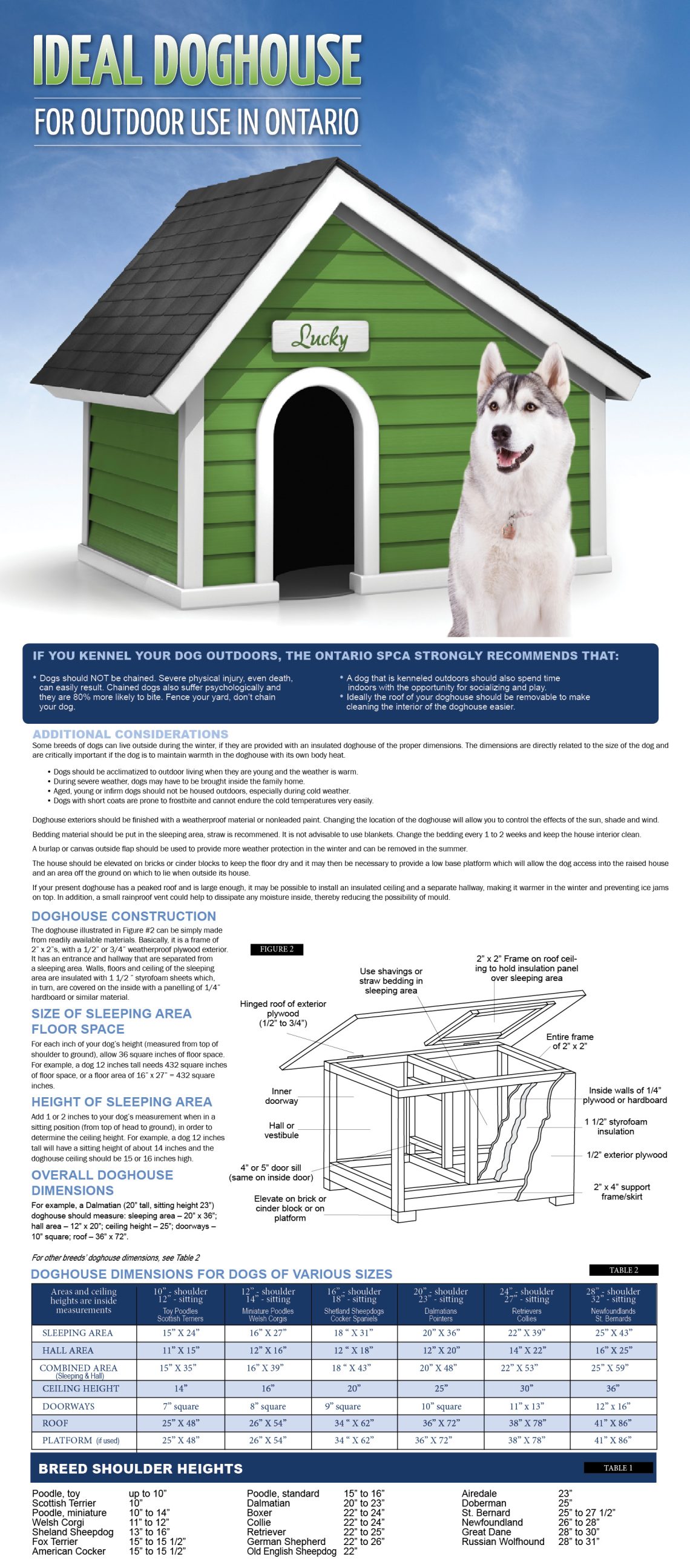
Tips for Keeping a Dog Outside the Home
Have you ever wondered if it is okay to leave a dog outside for long periods of time? Even if she likes to be outside the house and is well-trained, this does not mean that she will be safe on the street. There are many risks that a dog is exposed to when left alone on the street, such as weather conditions, poisonous plants, chemicals, and being attacked by other animals. In addition, if you decide to keep her on the street, she may get bored or feel abandoned.
Contents
Weather
It is necessary to protect the animal from such atmospheric phenomena as wind, rain, snow and even the sun. Different weather conditions require different solutions to ensure its safety. The amount of time a dog can stay outside depends mostly on the weather. On very cold or hot days, she should be able to take shelter in the house. It’s okay to let an active dog play in the snow if he can then warm up in the house. In the same way, a pet who loves to be in the sun should have cool water and the opportunity to hide in the shade. Not being able to enter the house, she can overheat or freeze to death.
If your dog needs to be outside for long periods of time, set up a kennel for him to shelter from the weather. Choose an insulated, waterproof booth that provides shelter from the sun. The kennel should not be too large, but it should not restrict the dog’s movements. Put a warm blanket in the kennel in the winter and a cooling towel in the summer.
Never leave an animal unattended for a long time, including overnight. If any trouble happens to him, such as heat stroke or hypothermia, then the longer he is left unattended, the worse. Always check if he has water and if he is sick.
Tips for keeping your dog safe outdoors
Heat
- The dog should always have access to water. Light bowls that keep tipping over or falling over are best left at home. Instead, dig a small hole in which to place a bucket. Fill a bucket with water and ice cubes. (Water stays cool longer in the ground.)
- Provide your pet with shelter from the sun. The sun’s rays can have a harmful effect on it. If he does not have the opportunity to hide from the heat, he will overheat and be unable to regulate his own body temperature. And, contrary to misconception, dogs can get sunburned – mostly around the nose and ears. Shelter from the sun will help protect them from sunburn.
- Do not forget that the paths and sand get very hot. If your dog walks barefoot like you do, take him to a cooler area, such as grass.
Cold
- The dog needs shelter from the cold and/or wind in winter. An insulated kennel provides protection from the weather. Infrared lamps, which are used in chicken incubators, are great for heating a dog house – the main thing is that its occupant is not too hot.
- Short-haired dogs require an extra layer of insulation. Give your pet an outdoor sweater or jacket.
- Keep it away from areas treated during the winter months with de-icers such as sodium chloride. These substances can cause irritation on the paws and mucous membranes of the animal. But worst of all, they are deadly poisonous if swallowed.
- If the snow cover is too deep and makes it difficult for the dog to move, clear areas for him to go to the toilet and play. Never leave her in snow up to her neck because she can get lost and you will have a hard time finding her in bad weather.
Access to the territory
- If your pet will have to spend a lot of time outside the home, ensure that there is a fence that isolates him well and does not allow him to escape. The fence will also reliably protect it from wild animals. Fences and aviaries are useful to limit his access to the garden or pond in the adjoining area.
- Make sure that the animal does not have access to areas in the garage where toxic substances such as antifreeze and gasoline are stored, and sharp tools that can cause serious harm or even death to it.
- The dog needs to provide constant access to food, water and a toilet.
- If your pet is accustomed to going out on business and returning immediately, then a special door for dogs may be useful to you. But never let him decide how much to be outside, and be sure to close the door at night.
Disturbing signs
- Heatstroke. Signs of heat stroke include vomiting, diarrhea, blue or reddening of the gums and tongue, drooling, and a fast heartbeat. Also, if you notice that the dog’s movements are slow and he does not listen to your commands, take him to the shade and cool him down as soon as possible.
- Subcooling. The Animal Humane Society calls signs such as “weak pulse, dilated pupils, slow heartbeat, very violent trembling, pale or bluish mucous membranes, body temperature below 35 degrees. The consequences of extreme hypothermia include neurological disorders such as coma, heart problems and kidney failure.”
Consider the emotional state of the pet before you send him outside for a long time. A dog is a pack animal and your family is its new pack. They want to be close to you and you enjoy their company. Let the dog explore the area, but always keep the door open so he can come back.





